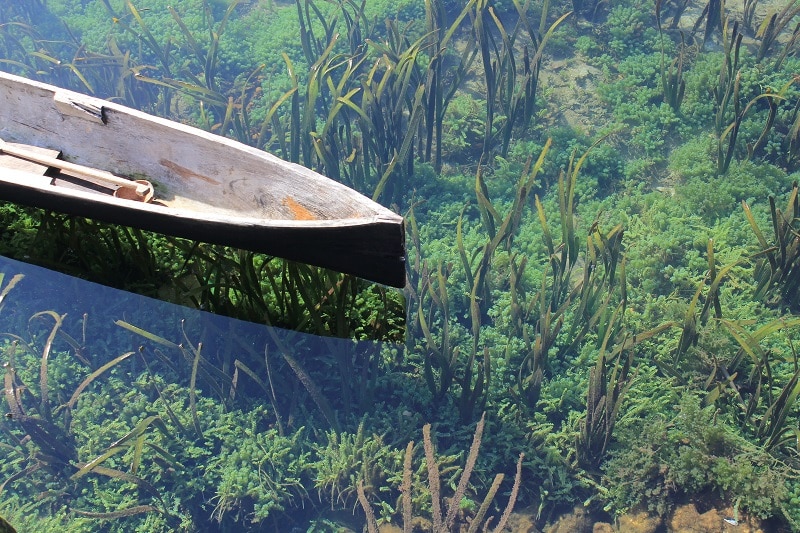Whether you’re new to kayaking or an experienced paddler, you will already know that there are different types of kayaks, which can be made from a diversity of materials in a variety of shapes, weights, and technical specifications. Each of them comes with its pros and cons, so if you’re considering buying your own, you may want to spend a bit of time researching which one is the right kind for you. This depends on several factors, including your intended usage and your budget.
In this article, we focus on a relativey new type of kayak: ABS kayaks. Below, we shed a light on what is an ABS kayak, its benefits, and how it compares to other kinds of kayaks so you’re armed with all the information you need to decide whether this is the type of kayak you’re looking for!
Kayaking Can Be a Fun and Exciting Sport
There are only a few activities that give outdoor enthusiasts such a varied experience as kayaking. It can give you an exhilarating or serene experience, depending on what you are seeking. There are different types of kayaking that require differently designed boats.
No matter what your age or background is, kayaking can be a sport enjoyed by people from all walks of life. Just as diverse people consider themselves kayakers, the kayaks used are also diverse. If you are sitting with a group of enthusiastic kayakers, a sure way to start a lively conversation is to ask them which material is the best for kayaks. This question will likely prompt a heated debate between the different materials that can be used and their benefits.
See also:
Understanding the Benefits of ABS Kayaks
The material used to make a kayak directly affects its performance, life span, weight, and ease of usage. The aesthetic pleasure you can get from paddling is dependent on the material too.
Acrylonitrile butadiene styrene or ABS kayaks are one of the most popular choices for kayakers. To understand why these are often favored, let us take a look at their properties and compare those made from other materials. By knowing the good and bad of each type of material, you will be able to understand why ABS kayaks are made to meet all your needs.
Thermoforming is gaining momentum in the world of manufacturing. More and more manufacturers are embracing this innovation to bring new products to their customers. Typically, kayaks have been made with rotational molding or lamination methods. Now that manufacturers know more about ABS kayaks and are using the process for thermoforming, the kayaks produced are more durable, scratch-resistant, and lightweight. Manufacturers can now produce thermoform kayaks which can be as long as 12 feet using ABS plastic. These kayaks are strong and UV-resistant, as the materials will not fade or weaken if it they are left out in the sun.
With the use of heat and vacuum pressure, thermoforming transforms the sheets of plastic into kayak hulls and decks. These sheets are made of impact-resistant ABS plastics. They are then seamed together. This whole process can be done in a very short period of time. Also, this form of plastic only deteriorates after a long period of time, and the thermoforms are generally completely recyclable.
Thermal-formed plastic kayaks are lighter and stiffer than roto-molded ones. These traits make for a nice combination of lightweight and performance-enhanced kayaks at an economical price. Though there is a lot of debate on their longevity, most users agree that these types of kayaks last for a long time. They are less prone to oil canning and are more stable when exposed to different temperatures.
Comparisons with Kayaks Made From Other Materials
Polyethylene or Plastic Kayaks
These are the first and most common models of kayaks. Polyethylene is used for everything, from automobile body parts to food storage containers, for its resilience property. However, just because it is plastic, it doesn’t mean that it can take all kinds of hits without causing you any expenses. It can be damaged when it comes into contact with rocks or barnacles. It is also heavier than other materials. Moreover, UV rays can degrade polyethylene, which means your kayak needs to have UV protection at all times.
Composite Kayaks
The kayaks that are included in this category include those made from laminates of fiberglass, aramid, carbon fiber, or even a blend of all these. They are, however, the most expensive of all kayaks. In addition, as they are made of a stiff composite, they are very fragile. When exposed to direct hits like hard rocks, they can be damaged and the cost of repair will be heavy on your wallet.
Wooden Kayaks
These are the favorites of DIY kayak builders. After being assembled, the wood needs a protective layer of fiberglass, resin, and varnish to protect it from the damages that can occur when exposed to natural elements. If you are not familiar and comfortable with the tools and equipment, you will have to get professional help from someone who can build your kayak. This will end up costing you more than it should. Furthermore, if the kayak doesn’t function properly, you won’t be sure whether to blame the craftsman or the tools.
What You Should Remember When Choosing Your Kayak
Every type of material that is used for building a kayak and its features affects the functioning capability of the kayak. You can determine which one is the best suited for you by considering how you plan to use it, i.e. If it is more for calms waters or for challenging and demanding sea treks.
Another important factor to consider is the cost. ABS kayaks are economical and can be easily used for an inexpensive recreational activity. The long-lasting material can ensure that your investment stays worthwhile for a long time.
Once you have purchased an ABS kayak, you will still need to take a few steps to maintain it in good condition. You can regularly rinse the kayak to loosen any dirt with a garden hose. Follow this up by adding mild soap or boat wash to a bucket of water. You can check the amount of boat wash that should be added by reading the label on the bottle so it doesn’t become too soapy and hard to clean.
Soak a clean sponge in soapy water and wash both sides of the kayak with it. You can scrub for a little extra time on any stubborn marks that you see until they are gone. Do not use sharp material to scrape any sticky marks.
You can then give it a final rinse with clean water, until you are sure there is no soap left. Let it dry completely. You can let it dry in the sun or use a towel to speed up the process.
For ABS kayaks, you can skip the waxing process, which can save you both time and effort. Those types of kayaks are easy to clean and maintain. By just following basic maintenance steps, you can extend the life of your kayak so it can be worth your money till the end of its lifetime.
In Conclusion
The relatively recent introduction of thermoformed ABS (acrylonitrile butadiene styrene) on the kayaking market has brought a new option that is convenientand lightweight whle remaining budget-frendly. We hope that this article gave you a clearer idea of what is an ABS kayak, how it stacks up against other types of kayaks, and whether it’s the right kind for you.
See also:



